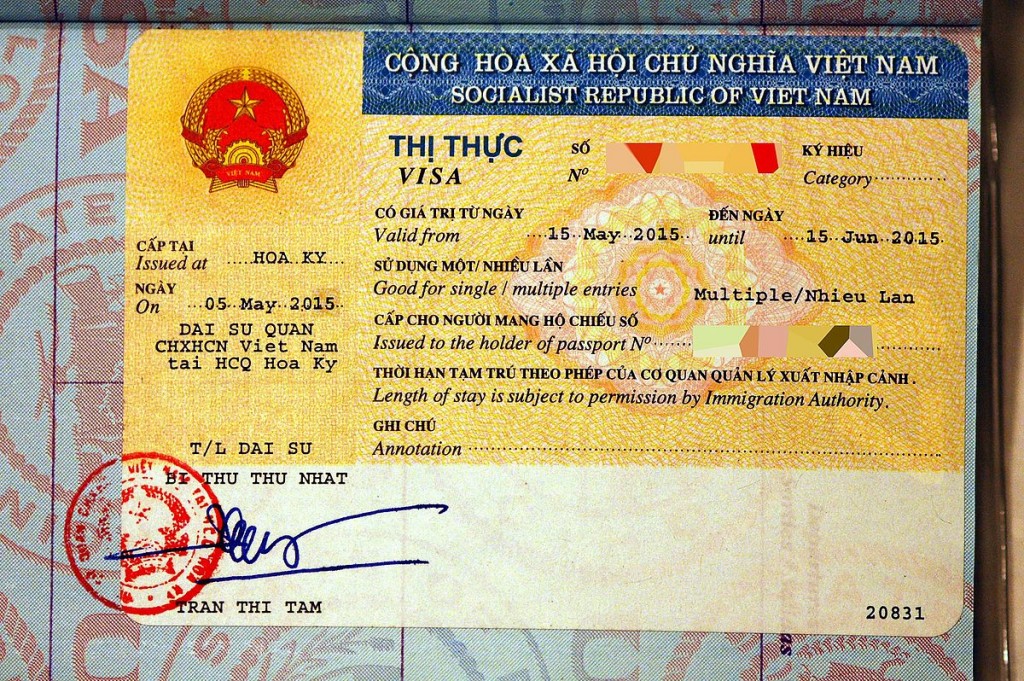All Vietnam visa types you need to know about
From 1st February, in order to increase the number of tourist come to Vietnam, Vietnam government has launched an Electrical Visa (E-visa) to simplify the process of applying visa for foreigner. Therefore people who want to visit Vietnam now have three ways to get Vietnam visa: Getting Vietnam visa at the Embassy, applying for Vietnam visa on arrival or obtaining Vietnam E-visa.
While you have to come in a person to apply visa at Vietnam Embassy, Vietnam visa on arrival and Vietnam E-visa provide the online procedure for visa applicants.
In order to get Vietnam visa at the Embassy, you will have to follow different procedures, processing time and fee of each Embassy. Your original passport and relevant documents are required as well as your presence is also asked during the process of applying visa at the Embassy. You will get your full visa stamped before entering Vietnam. Further details can be obtained by contacting with the nearest Vietnam Embassy or Consulate in your country.
You can check the address of contacts of different Vietnam Embassy/ Consulate basing on your citizenship or residency at: https://www.vietnam-visa.com/embassy/
To compare with getting Vietnam visa at Embassy, applying for Vietnam visa on arrival and Vietnam E-visa is much easier and faster. Both Vietnam visa on arrival and Vietnam E-visa are travel documents granted by Vietnamese competent authorities. However, there are still some differences between these two options.

Vietnam Visa Sample
VOA Vietnam (Vietnam visa on arrival) is applied for all travelers to Vietnam by air, whereas Vietnam E-visa is a kind of visa providing permission to enter Vietnam with all the travelling ways including sea, river, rail, road and air travel, but it is only issued to foreigners in the list of 40 countries. For more details about Vietnam E-visa, kindly click on: https://www.vietnam-visa.com/everything-you-need-to-know-about-vietnam-e-visa/
Vietnam E-visa allows visitors planning to Vietnam for tourism purpose only with maximum of 30 days for single entry. On the other hand, Applying Vietnam visa on arrival is valid for any mean of travelers’ purpose such as tourist, business, visiting friends or relatives and Visa validity of this type can vary from a month to a year for multiple entry.
To obtain Vietnam E-visa, visitors can visit https://evisa.xuatnhapcanh.gov.vn/ and follow their instruction. You will need to pay US $25 and within 3 working days, you will know your Vietnam visa application is approved or not. If your visa application is refused, there will be no refund.
For those who choose to apply for Vietnam visa on arrival, you can go online to https://booking.vietnam-visa.com/step1.html. After completing the form and make payment of service fee, you will receive the visa approval letter via email within 2 working days or even quicker. You will have a visa stamped onto your passport at Vietnam airport upon arrival by presenting original passport, photos, entry and exit form and stamping fee in cash.
In conclusion, all above three choice have its own advantages and disadvantages, while getting Vietnam visa at Embassy is a tradition way, Vietnam E-visa is faster but quite new system. Vietnam visa on arrival is highly recommended for its safety and convenience.





